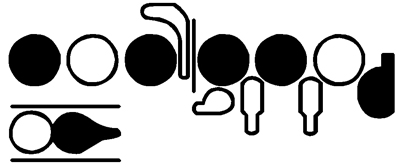Editor’s note: This continues to be one of our most frequently requested articles that piccolo players turn to for assistance when they are studying and performing the Largo movement from the Concerto in C Major (F. VI, No. 4) for piccolo and strings. It first appeared in the December 1976 issue of The Instrumentalist and has been reprinted in Flute Talk in October 1988 and April 2001.
Fixed ornaments, such as trills, appoggiaturas, grace notes, turns, and mordents, occur abundantly I baroque music and are an indispensable part of its style. Most of these ornaments are either written in small notes or shown by means of well-known shorthand symbols.
Some composers, notably J.S. Bach, preferred writing out in large notes some of the more complex ornamental figures, especially in slow movements. Other composers wrote relatively simple and unadorned melodic lines in their slow movements, taking it for granted that the performer (who might very likely be the composer himself) would freely extemporize elaborate ornaments and florid passage work based on both the intervallic characteristics of the melody and its basic harmonic underpinning. This simple ornamentation is called the Italian style (in contrast to the French style, with its more elaborate use of fixed ornaments and only a discreet amount of free improvisation).
This Italian-style ornamentation was applied to many of the slow movements of Handel, Vivaldi, and Telemann. Telemann, in fact, even went to the trouble of writing out some very instructive examples of “extempore variations” in the opening slow movements of his Twelve Methodical Sonatas for Flute and Continuo1. Careful study and practice of these valuable examples should enable a modern performer to gradually acquire a technique of ornamentation that will bring about performances that more nearly approximate the style of the original.
Another important source of instruction for Italian-style ornamentation is the incomparable Essay of a Method for Playing the Transverse Flute by Quantz2. Chapter 13 of this book contains comprehensive tables and analyses “Of Extempore Variations on Simple Intervals,” and Chapter 14 applies these principles to the subject “Of the Manner of Playing the Adagio.”
I have found these two chapters in Quantz to be especially helpful in my own approach to ornamentation, and my performances of the Vivaldi C Major Piccolo Concerto (F. VI, No. 4) with the Chicago Symphony have given me an ideal and ongoing “proving ground” for developing an Italian-style ornamentation for the Largo second movement. Although it will probably undergo further change – most like toward more simplicity – I am glad to share this current version with interested readers in the hope that it will offer encouragement to their own efforts in this direction.
The top line is the original version by Vivaldi, which is to be played as written the first time (suggested slurs are indicated by dotted lines). The ornamented second line is then played on the repeat.
I have purposely omitted editorial dynamic markings, trusting that the performer can work out a tasteful scheme of dynamic inflections that would in the long run sound better than some necessarily sketchy editings might suggest. There are obviously a number of opportunities for echo effects in this movement, but one should not do them too predictably. In fact, for some sections of the ornamented version I have made a point of echoing by means of rhythmic and melodic variation as a relief from the usual type of dynamic echo. Examples of this are in bars 4, 8, 9, 10, and 12.
My tempo preference is eighth note = 69-72. Some piccolos have high C#s that sound flat or harsh, so when that note occurs in the more sustained parts of the melody (as in bars 4, 5, and 7), I would suggest the following fingering:

Or, if that is still too flat:

To coax a good diminuendo on the last B natural of bar 5, I sometimes use this fingering:

Be careful not to let it get too sharp. I use the same fingering for the last B natural of bar 11 to forestall the likelihood of the regular B fingering being too loud after having just taken a quick breath.
1Telemann, Georg Philipp. Zwölf methodishe Sonaten für Querflöte und Basso Continuo. Ed. Max Seiffert. Kassel: Barenreiter 1955. BA2951.
2Quantz, Johann Joachim. On Playing the Flute (English translation by Edward R. Reilly). Now available in paper cover from Schirmer Books, 100D Brown St., Riverside, N.J. 08075. $7.95
Concerto in C Major
(F. VI, No. 4) for piccolo and strings
By Antonio Vivaldi, Embellished version by Walfrid Kujala






